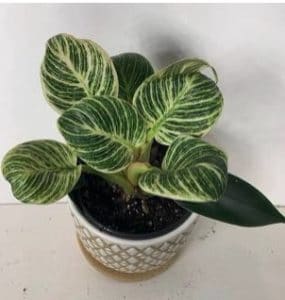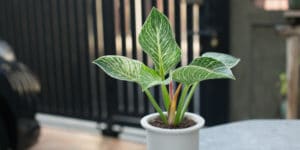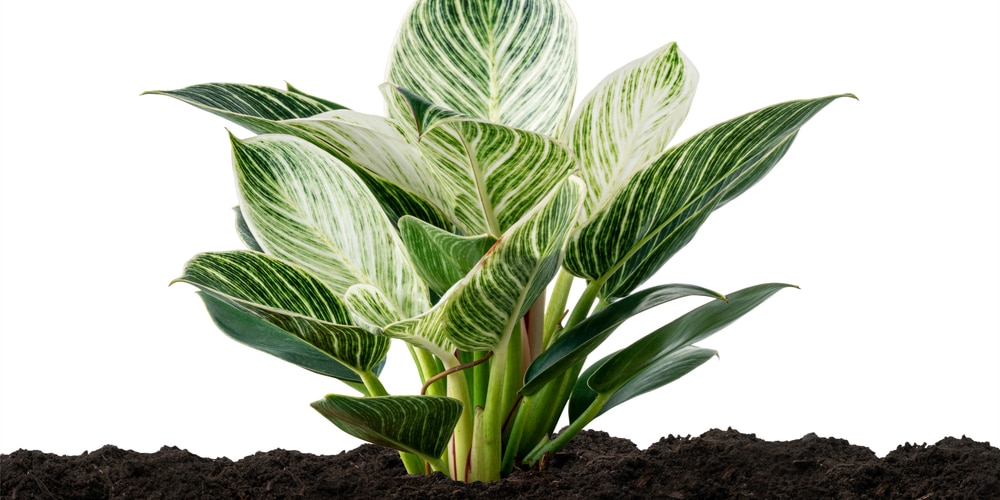Houseplants bring natural beauty to our homes and offices. But along with their beauty, we must learn how to care for each plant. Care is more than just watering plants and hoping for the best. We need to understand the cycles of plants and the diseases that may affect them.
The Philodendron Birkin reverting issue has been worrying some florists due to the plant’s lack of pigment. Many factors have contributed to this problem, but there are also several fixes that people can do to prevent it.
In this article, we will learn why your Philodendron Birkin is reverting and what steps you can take to prevent it.
What Is the Philodendron Birkin
For those who do not know about this plant, it is a household or office plant characterized by its white-streaked/yellow-bordered green leaves.
There are 489 species of this plant, and it is native to the Brazilian Rainforest. Owners and caretakers of this plant can expect it to show a creamy white or soft yellow color when fully grown.
Compared to other plants, the Birkin is a fast grower and will reach its peak height after about three years of growth. Of course, this also depends on the planters’ care and their soil contents.
It is best not to put it in direct sunlight and keep it at about room temperature for the best results. Supply it with water weekly and give it fertilizing agents once a month. If you take care of the plant properly, you’ll enjoy its rare green, white striped leaves that resemble a creamy milk color.
Unfortunately, some people witness this plant’s white-laced presentation, but others may not get the chance because the Philodendron Birkin plant is reverting after variegation.
What Is Variegation
Variegation is the term used to describe the philodendron Birkin’s color-changing activity. Plants can undergo several different types of variegation, including:
- Chimeral
- Pattern Gene
- Blister/Reflective
- Viral Variegation
- Transposon
With the proper treatment, a plant will transform its leaves into something that looks very good in home decor. Plants undergoing this metamorphosis have very high value for people who want to complete their office space or grand living room.
The Philodendron Birkin undergoes a rare form of variegation called chimeric, giving it its veiny-like streaks along its plant body and edge. A mutation in the plant’s genes causes this unique color pattern.
Why Is the Philodendron Birkin Reverting?
“Philodendron Birkin Reverting” refers to the plant returning to its original colors when you first planted it. That does not necessarily mean it will always revert to its green coloring, but it does not complete its variegation process.
The discoloration is why many people will not see its creamy white or bright yellow stripes, depending on the plant’s genetics. The regression is due to factors like improper care and unfortunate environmental conditions.
People who do not care for the plant properly will cause the plant to revert. Once that happens, there is not much they can do to stop it.
How Can You Stop the Plant From Reverting
There is no definitive way to stop it from reverting once it begins the undertaking. The plant’s genetics will cause it to revert because that is a response to being ill-kept and mismanaged.
However, if you catch it early enough, you can stop the plant’s discoloration from reaching the rest of its body by cutting off the stems that mostly reverted to their original color. Assuming not every leaf has lost its variegation, this can be a quick fix to a potentially disastrous problem.
The good news is that if someone takes excellent care of the philodendron plants, they rarely revert. Plus, it is almost effortless to take care of these plants because they do not need direct sunlight and only require water once a week and fertilizer once a month.
In Conclusion
In short, you stop your philodendron Birkin from reverting by preventing it from happening altogether. In this case, prevention is the only answer to keep your lovely plant from reverting and potentially dying. Given how easy it is to keep these plants alive, stopping the philodendron from reverting should not be too big of a problem.


